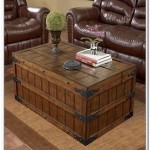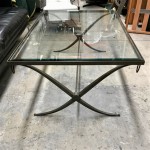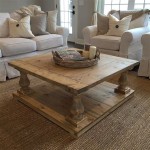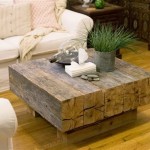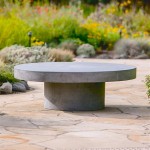How to Make a Simple Wooden Table
Creating a wooden table is a rewarding DIY project that allows you to craft a functional and stylish piece of furniture for your home. With the right tools, materials, and a bit of patience, you can build a sturdy and elegant table that will last for years to come. This article will guide you through the process of constructing a simple wooden table, providing step-by-step instructions and helpful tips along the way.
1. Choosing Your Materials and Tools
Before embarking on your table-making journey, it is essential to gather the necessary materials and tools. The type of wood you choose will influence the table's appearance, durability, and cost. Some popular choices for tabletops include hardwoods like maple, oak, and cherry, known for their strength and aesthetic appeal. For the table legs, consider using sturdy and affordable options such as pine or birch. Depending on your design, you might also require plywood for the table's underside.
Here is a list of essential tools for building a wooden table:
- Measuring tape: Accurately measure the dimensions of your table and its components.
- Saw: Cut the wood to size. A circular saw, table saw, or handsaw will suffice depending on your experience and the size of the project.
- Drill: Create pilot holes for screws and install fasteners.
- Screwdriver: Securely attach the table legs and tabletop.
- Clamps: Hold the wood pieces together while assembling and gluing.
- Sandpaper: Smooth out rough edges and create a polished finish.
- Wood glue: Bond the tabletop and legs for a strong and durable connection.
- Finishing supplies: Stain, paint, or varnish to protect and enhance the table's appearance.
2. Creating the Tabletop
The tabletop is the heart of your table, so it's important to create a sturdy and visually appealing surface. Begin by measuring and cutting the wood for your tabletop to the desired dimensions. If you are using multiple pieces of wood to create the tabletop, make sure they are joined securely with wood glue and screws. This will prevent the table from warping or splitting over time.
Once the tabletop is properly formed, use sandpaper to smooth out any rough edges and create a consistent surface. Consider rounding the corners of the tabletop for a safer and more aesthetically pleasing design. It is also a good idea to create a slight bevel on the underside of the tabletop to conceal the joining edges and add a subtle design element.
3. Constructing the Table Legs
The table legs provide both stability and support to your table. Choose a design for your legs that complements the style of your tabletop. Simple rectangular or square legs offer a classic and sturdy option. You can also opt for more elaborate designs using a combination of wood cuts and angles.
Measure and cut the wood for your table legs to the desired height. Ensure the legs are cut to the same length for a balanced and symmetrical table. Use wood glue and screws to attach the legs to the tabletop. If you are using a more elaborate design, you may need to create additional braces or supports to ensure stability. Once the legs are securely attached, use sandpaper to smooth out any rough edges and create a consistent finish.
4. Finishing the Table
After your table is assembled, it's time to finish it to protect the wood and enhance its appearance. Apply a wood stain to create a rich color and highlight the wood's natural grain patterns. For a more vibrant finish, you can paint the table with your desired color. Regardless of your chosen finish, ensure that it is applied evenly and evenly to all surfaces. Allow the finish to dry thoroughly before using your table.
For extra protection and durability, apply a coat of varnish or polyurethane sealant over the stain or paint. This will create a protective layer that will resist scratches and stains. You can apply multiple coats of sealant for added protection and a smooth finish. Allow each coat to dry completely before applying the next.
5. Adding Design Elements
Once the basic construction is complete, you can add design elements to personalize your table further. Consider adding a decorative trim around the tabletop or adding a shelf to the bottom using additional pieces of wood. You can incorporate a drawer for storage or even create a unique tabletop design using mosaic tile or other decorative materials.
By taking the time to plan and execute each step carefully, you can create a beautiful and functional wooden table that will be a treasured piece in your home for years to come. Remember, woodworking is a rewarding and creative endeavor that allows you to express your personal style while building something practical and lasting.

How To Make A Wooden Table Step By Guide Ronix Mag

Build A Simple Reclaimed Wood Table Diy Furniture Plans

How To Make A Wooden Table Step By Guide Ronix Mag

Pin On Ideas

Build A Simple Sy Wooden Table Make

Diy Table Projects Instructables

How To Make A Simple Table

Learn How To Build A Simple Table Easy Step By Tutorial

How To Make A Wooden Table Step By Guide Ronix Mag

Making A Patio Side Table Diy Woodworking Simple
Related Posts

